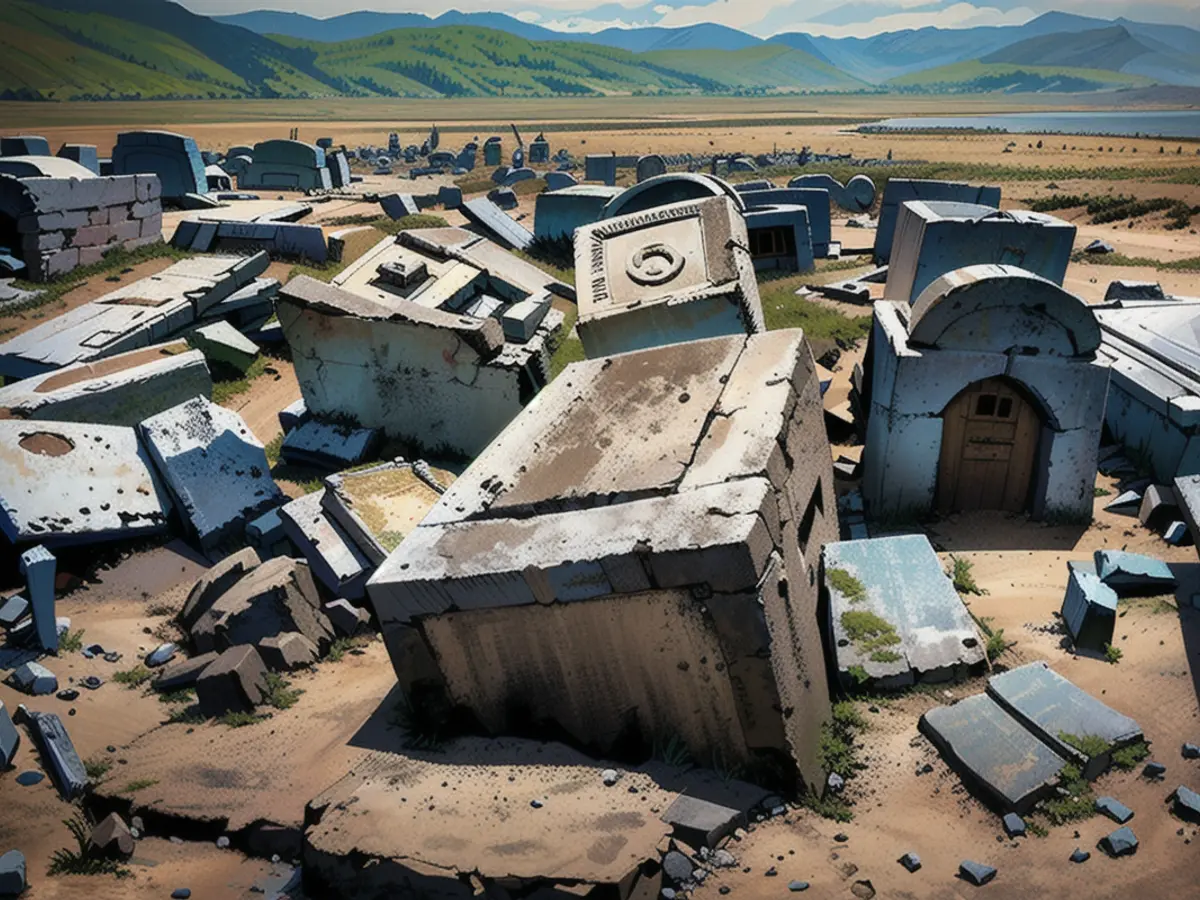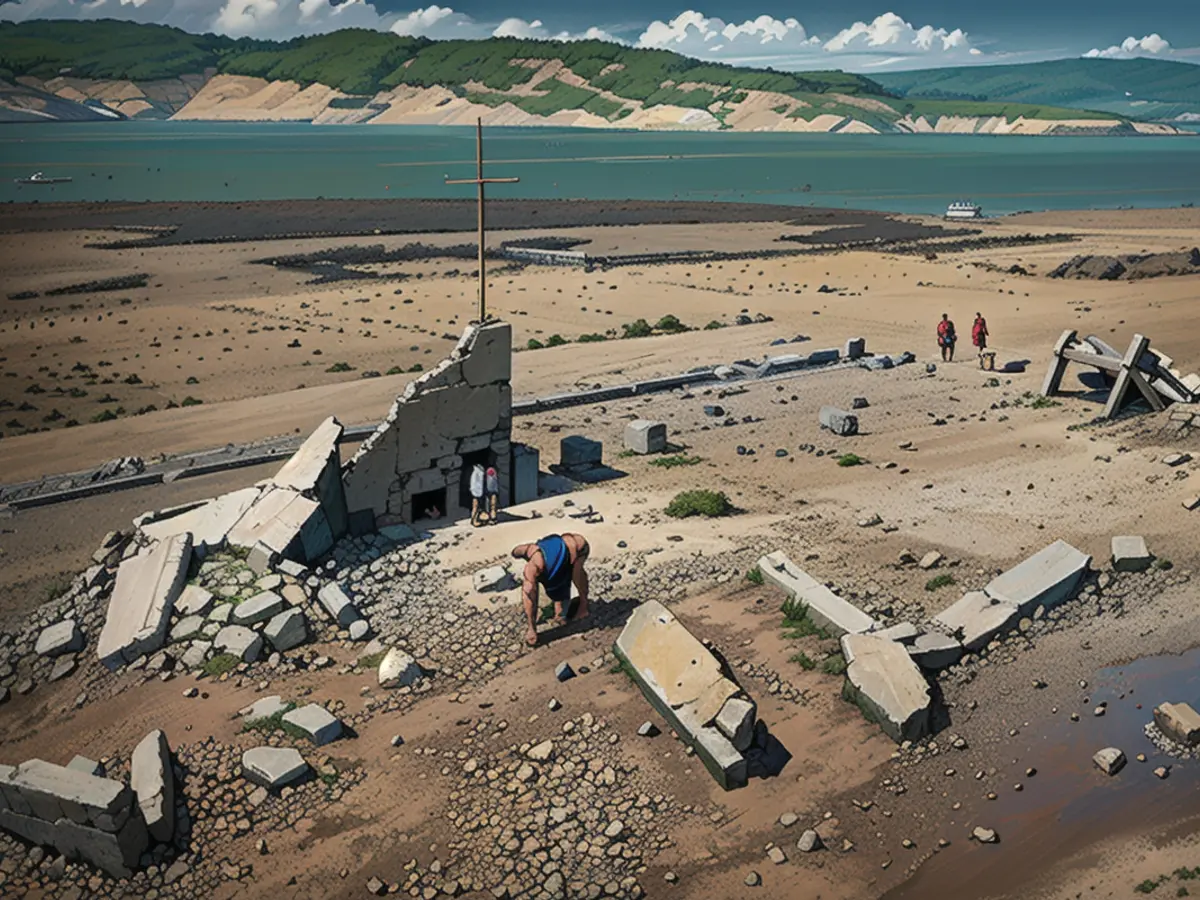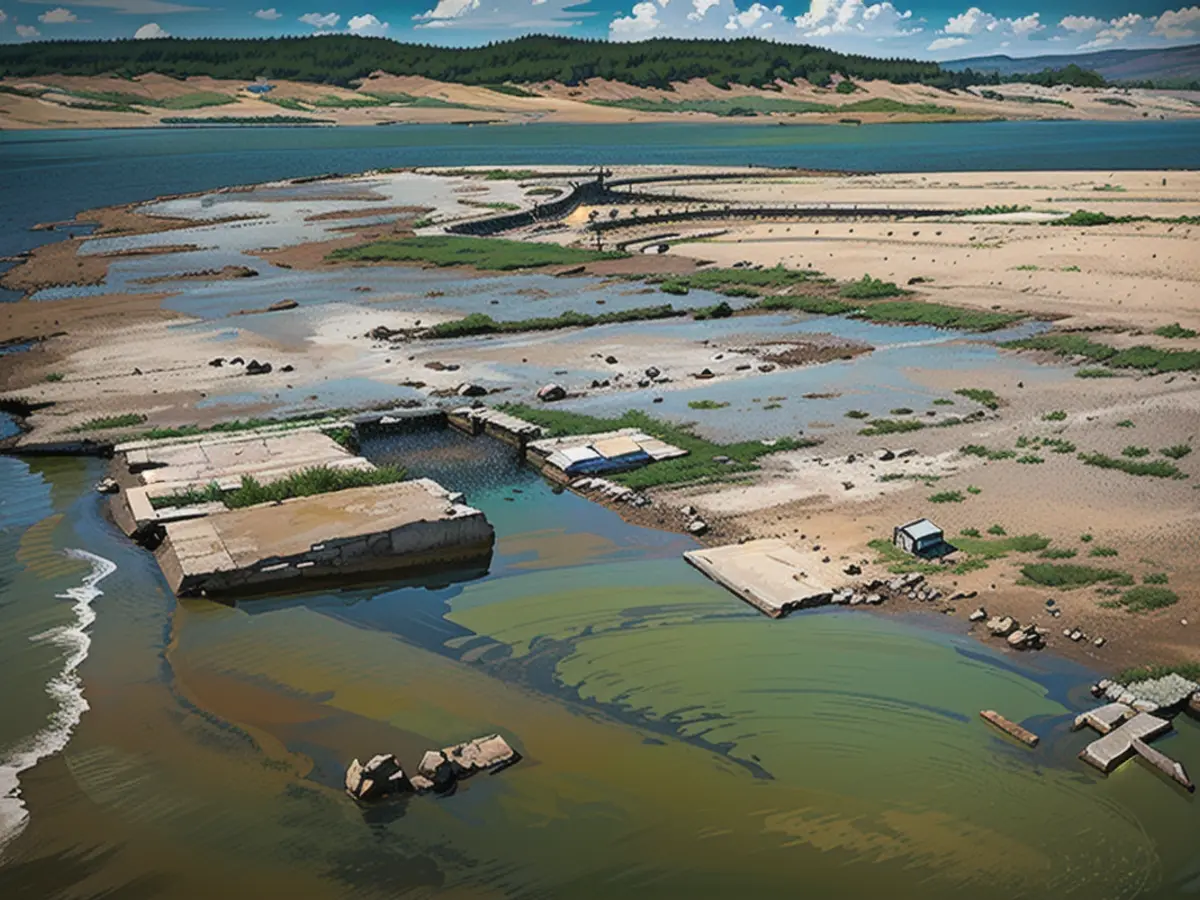A 300-year-old site is reemerging due to the extreme drought that has emptied a dam in the Philippines.
Eerie remnants of structures - a part of a church, tombstones, and a municipal hall marker - mysteriously resurfaced in the midst of Pantabangan Dam in Nueva Ecija province, after a long period of minimal rainfall in March. Marlon Paladin, an engineer for the National Irrigation Administration, revealed to AFP that these relics weren't just brought back by recent weather changes, but were in fact intentionally submerged during the dam's construction in the 1970s.
Presently, the Philippines is grappling with a drought that's affecting almost half of its provinces, making the dam's water levels significantly lower than usual, said AFP. Weather agency PAGASA's records indicate that the water levels on April 30 were close to 50 meters decrease from the standard levels.

This has been the sixth time the settlement has re-emerged since the creation of the reservoir, but as per Paladin, this is the longest it has been visible during his term.

With these lower water levels, the ruins have become a popular tourist curiosity, observed AFP.

The Philippines has been subjected to unbearable heatwaves in the past few weeks, so intense that schools have had to stop classes due to unprecedented temperatures of up to 42 degrees Celsius (107 degrees Fahrenheit). Although April and May are usually the hottest months of the year, averaging in the mid-30s (high 80s to mid 90s Fahrenheit), the country has endured even higher temperatures this year. PAGASA's data reveals that in the past five days, the heat index in certain areas has exceeded 40 degrees (104 degrees Fahrenheit). Muñoz, a town near the dam, experienced heat index values of over 41 degrees (106 degrees Fahrenheit) in the past five days, and on Sunday, it seemed like a whopping 47 degrees (117 degrees Fahrenheit) due to additional contributing factors. Drought covered much of northern and central Luzon, including the province where the dam is situated, as of the end of March, reported PAGASA.

April saw a lack of rainfall all across the country, with portions of central and southern Luzon getting less than a quarter of the expected rainfall, according to the US Climate Prediction Center. The dangerous El Niño climate pattern has intensified this drought situation, according to AFP. This natural phenomenon, combined with human-induced planetary warming due to climate change, has led to potentially life-threatening heat for much of the region, the most vulnerable area in the world to the impacts of climate change. Climatologist Maximiliano Herrera explained to CNN that temperatures in the region have reached record highs, making life unbearably hot and humid for hundreds of millions of people.

Back in 2023, several Southeast Asian nations experienced record-breaking temperatures above 100 degrees Fahrenheit during spring, an event unimaginable without the effects of climate change, as stated in a report from the World Weather Attribution.
CNN's Heather Chen, Taylor Ward, and Helen Regan contributed to this piece.
Read also:
Source: edition.cnn.com








